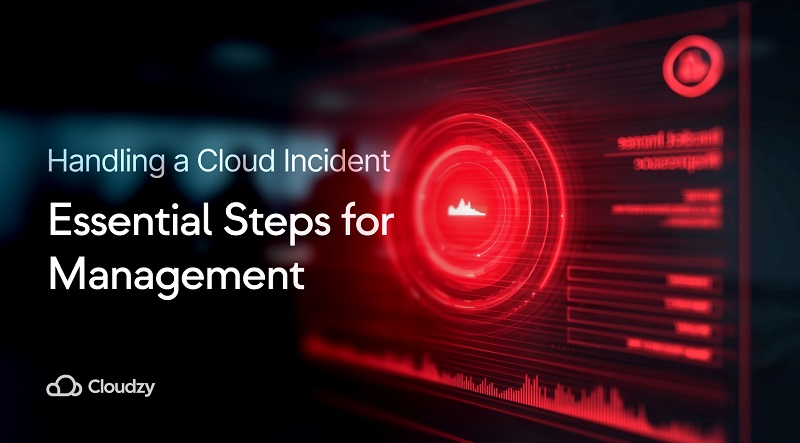First things first: no one wants to face a breach, yet solid cloud incident response for business planning separates a brief scare from a drawn‑out disaster. In the next few minutes, I will walk you through a clear, leadership‑focused roadmap that protects uptime, reputation, and the bottom line while staying on the right side of regulators. This guidance pairs neatly with good cloud server security hygiene and a reliable VPS server cloud foundation.
A Cloud Security Incident Has Occurred: What Business Leaders MUST Do First
Once the alert fires, speed, and calm heads keep the wheels from wobbling. I like to remind leaders that the first five minutes set the tempo, so pick up the secure phone, breathe, and jot down the basics instead of guessing on a noisy chat.
Think of Acme‑SaaS last spring: their monitoring flagged an unexpected surge of outbound traffic at 03:07. The on‑call COO paused scheduled tweets, opened the crisis channel in under four minutes, and confirmed which customer tiers sat on the impacted cluster before looping in the CTO. That measured start trimmed hours off containment later. Before the technical team dives deep, management should:
- Activate the cyber crisis management plan and appoint an executive sponsor.
- Confirm facts—time, scope, affected assets—to avoid conflicting stories.
- Launch the data breach communication plan draft; you will refine as new intel arrives.
These steps anchor the wider cloud incident response for business processes and stop rumor mills before they start.
Understanding Your Role: The Incident Response Team and Management Responsibilities
Every seasoned leader knows that clear hats prevent chaos and finger‑pointing when tension spikes. I recommend keeping a laminated chart of your incident response team roles business taped inside your notebook so no one wonders who owns what when alerts flare at 02 a.m. Each seat on that chart ties to budget authority and a single communication route, trimming decision loops to minutes, not hours.
Take Beta‑FinTech’s ransomware scare last quarter: during containment, the finance director pushed to wire a six‑figure “decrypt‑in‑a‑day” service. Because their charter stated that any spend above 20k rests with the executive lead, the team paused, chose offline backups, and shaved a full week off downtime. Clear lines saved cash and stopped scope creep. Typical incident response team roles business leaders should verify include:
- Executive lead: approves spend, handles board queries.
- IT manager: directs containment and eradication tasks.
- Legal counsel: confirms legal obligations after data breach (US/EU) and advises on privilege.
- PR manager: owns external statements and reputation management after cyber attack talking points.
Clear accountability keeps the wider cloud incident response for business engine humming.
Key Phases of Incident Response (Simplified for Management)
| Phase | Management Focus | Communication Trigger |
| Preparation | Fund training, approve tabletop drills | Annual board report |
| Identification | Validate severity with IT | Early alert to stakeholders |
| Containment | Authorize resource spend | Internal update every 2 hrs |
| Eradication | Green‑light tooling changes | Legal review needed |
| Recovery | Sign off on post‑breach recovery steps | Public update when safe |
| Lessons Learned | Sponsor after‑action review | Final board summary |
Staying engaged at each stage keeps business continuity after security incident goals realistic.
Legal and Regulatory Obligations After a Cloud Breach (GDPR, US State Laws)
Ignoring rules invites fines. Review legal obligations after data breach (US/EU) early, document every decision, and track submission deadlines. Common triggers:
- Personal data exposure over set thresholds.
- Critical‑infrastructure disruption.
- Contractual notice clauses tied to your cloud incident response for business SLAs.
Managing Reputational Damage and Customer Trust
Effective reputation management after cyber attack hinges on empathy and proof of remediation. Offer credit monitoring, outline security upgrades, and keep status pages flowing with updates.
Working with Third Parties: Forensics, Legal, PR, Cloud Provider
Leverage outside expertise, but stay in the driver’s seat. Your cloud provider’s shared responsibility model means they support tooling, yet cloud incident response for business accountability never fully shifts. A speedy escalation path and firm SLAs help everyone row in the same direction.
The Importance of Testing Your Incident Response Plan (Management’s Role)
Tabletop exercise benefits for management include sharper decision speed, refined escalations, and measurable ROI for security spend. Treat simulations as mini projects, report findings to the board, and adjust budgets accordingly.
Key Questions Management Should Ask During and After an Incident
- Are we following the approved cyber crisis management plan?
- Do our logs map to our incident response team roles business charter?
- Have we met every legal obligations after the data breach deadline?
- Which post‑breach recovery steps are incomplete?
- How will we validate improved cloud incident response for business readiness next quarter?
By keeping these questions close, leadership steers the organisation toward swift recovery, steady trust, and long‑term resilience.
Final Thoughts
A security scare does not have to derail growth. A living cloud incident response for business plan, clear hats, confident messaging, and steady executive backing keep you in charge of the story and protect customer trust. I see incident handling as just another core business process: review it, rehearse it, and fund it.
One last reminder from the trenches: keep learning. Each alert—yes, even a harmless false positive—provides clues you can roll into tighter controls, sharper playbooks, and stronger ties with your cloud provider. Stay curious, refresh those tabletop drills, and the next signal at 02 a.m. will feel like a practiced exercise, not a fire drill.




One thought on “Handling a Cloud Incident: Essential Steps for Management”
I really resonate with your point about confirming facts quickly—without that, things can spiral out of control. Clear, calm communication in those early moments can make all the difference in minimizing the impact of an incident.